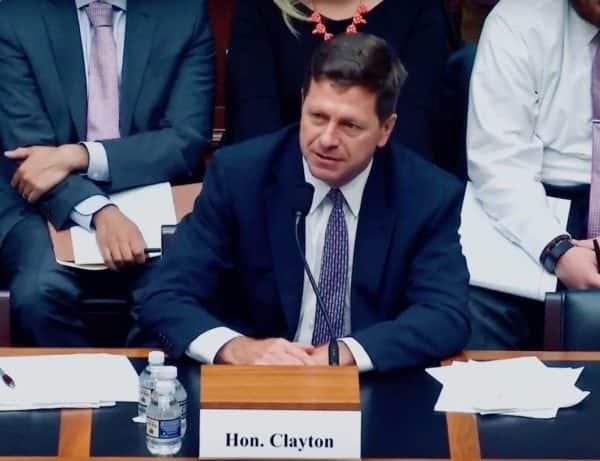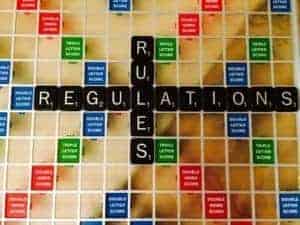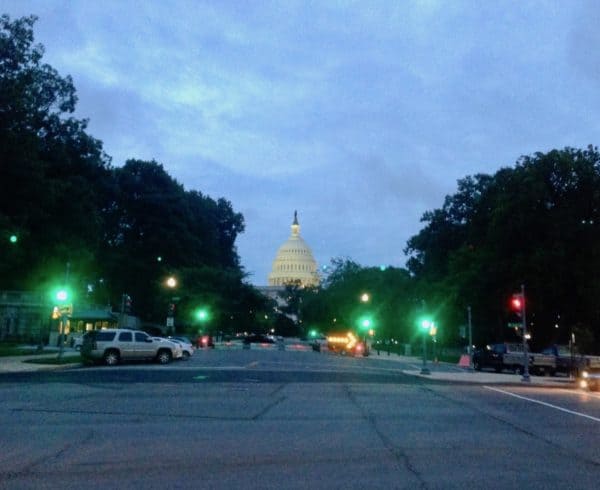This summer, with little fanfare, the North American Securities Administrators Association (NASAA) announced some interesting and, in our view, directionally enlightened ideas on potential changes to state securities laws as they relate to secondary market trading.
If you aren’t familiar with NASAA, it is a Washington, D.C.-based association that represents the interests of state securities regulators. If adopted, NASAA’s proposal may help provide a solution to reduce the friction typically associated with aftermarket trading at the state level of not only traditional securities but also of “tokens” or digital assets that are securities.
As has been widely reported, until recently many token issuers believed they were issuing “utility” tokens that were otherwise exempt from the application of federal and state securities laws.
With clear messaging from the Securities and Exchange Commission (SEC), most issuers in the market have come to appreciate and acknowledge that they were mistaken.
 The pressing issue these days is not only how to incorporate compliance with the securities laws into token offerings prospectively, but also how to remediate potential prior non-compliance.
The pressing issue these days is not only how to incorporate compliance with the securities laws into token offerings prospectively, but also how to remediate potential prior non-compliance.
In fact, many issuers may have to remediate the entire chain of previously non-compliant securities activity if they want to achieve full compliance going forward. Given the great awakening that there has yet to be such a novelty instrument as a “utility token,” issuers need to grapple with the equally true reality that they may have also facilitated unlawful aftermarket trading in such tokens. Investors themselves may also have additional violations to contend with which will need separate attention.
Given the awakening that there has yet to be such a novelty instrument as a “utility token,” issuers need to grapple with the reality that they may have facilitated unlawful aftermarket trading in such tokens
Token issuers like to insist that they aren’t responsible for policing secondary trades in their tokens and that responsibility for compliance rests solely with the selling purchaser.
While there is some truth to that, it’s not true in all instances and certainly not in the context of many of the token offerings we’ve seen conducted to date.
Distribution of Securities & Statutory Underwriting
For example, issuers of privately-placed securities generally have to exercise reasonable care to assure that they are not selling securities to persons intent on immediately reselling. It’s slightly more complicated than this, but, in general, the fundamental issue is whether the parties are participating in a distribution of securities.
Sellers involved in a distribution are considered to be statutory underwriters and sales by them are, for all intents and purposes, attributable to the issuer.
Token issuers will eventually come to appreciate this in the same way in which they are learning to accept the issuances of tokens as securities issuances.
These aren’t novel interpretations of law meant to target the token industry but established theories of law imposed on private issuers of securities for generations.
Unsolicited or Not?
The presence of an ATS (Alternative Trading System, registered with FINRA) to facilitate these secondary transactions while an important development to bringing the token industry into compliance doesn’t in and of itself solve for the specifics of state regulatory compliance by the seller of the security.
 While there may be applicable exemptions available for individual sellers, we believe that a more holistic approach will be required by issuers and resellers. A key issue will be whether the ATS is accepting unsolicited transactions.
While there may be applicable exemptions available for individual sellers, we believe that a more holistic approach will be required by issuers and resellers. A key issue will be whether the ATS is accepting unsolicited transactions.
Whether or not a sale of a token posted on a non-password protected website will be deemed to be unsolicited is an issue to be determined. If the determination is that a posting on a publicly-available website is a solicitation then all regulatory jurisdictions (including all 50 states and international) will have enforcement authority. Keep in mind that the ATS will be regulated by FINRA and they may very well desire to ensure that purchasers of secondary transactions have better and more meaningful access to current information about the issuers prior to facilitating any such transaction on behalf of an account holder/purchaser—similar to most other regulators.
Token issuers that either failed to comply with the securities laws at the time of the original financing, including, in our example, those that failed to exercise reasonable care to only sell to persons not involved in a distribution, may have to take affirmative corrective action in order to redress prior misconduct.
This isn’t a new concept. In fact, noncompliant securities offerings have occurred for generations and there are means by which to remediate violations and become compliant.
Offering investors their money back in a “rescission offering” may be the only way to properly proceed to clean up both the initial and subsequent sales. The rescission is predicated on the original offering.
Offering investors their money back in a “rescission offering” may be the only way to properly proceed to clean up both the initial and subsequent sales #ICOs
If the securities were initially issued in a Rule 506 offering, then that is the offering/investment that needs to be reconfirmed. In a rescission offer, the investors receive the option to get money back or stay in the original offering. If the investor elects to stay, the date of rejecting the rescission offer becomes the new date of sale. Nothing in the original offering is changed other than the deemed date of investment. While that is clearly a painful, but not unprecedented, process, NASAA’s proposal presents a potential silver lining as described below.
The NASAA Proposal
More specifically, it may provide an incentive for token issuers to remedy previous compliance failures through the Regulation A (Reg A+) offering process. By reducing aftermarket trading friction for the securities of issuers that have previously sold securities in a Tier 2 Regulation A offering, securities token issuers will be able to enable tokens previously issued in non-compliant offerings to subsequently trade lawfully throughout the U.S., so long as the issuer has qualified a Tier 2, Regulation A offering and is current in its ongoing reporting requirement.
Implicit in the NASAA proposal, and the so-called manual exemption upon which it is based, is the notion that with the ongoing commitment to keep investors up to date on the latest company information comes greater permissibility with secondary trading.
NASAA’s proposal highlights one potential benefit of remediating past violations through the facilitation of secondary market trading of the securities of issuers that have previously sold securities in a Tier 2 Regulation A offering and that properly comply with current and ongoing disclosure requirements. The NASAA proposal is a welcome initiative and one which the industry should vocally support and submit comment letters.
NASAA’s first proposed model rule would designate certain sources of information/data as nationally recognized securities manuals or their electronic equivalent for purposes of the so-called “manual exemption” from registration under state securities law.
This proposed model rule is intended to address issues that have arisen as a result of the discontinuation of the corporate records manual previously published by Standard & Poor’s. NASAA’s proposed rule addresses the federal requirement and the public’s need for ongoing disclosure about the issuer and its business.
Consistent with how disclosure for public companies work, the issuer must provide investors with full and fair disclosure not only at the time of the initial issuance of the securities but then again on an ongoing basis, otherwise known as, “continuous disclosure”. The continuous disclosure is equally important for secondary trading since, without it, investors would only have access to the information provided to investors at the time of the primary issuance of the tokens to the initial purchasers. Quite quickly, this information would be stale and investors would be trading securities without the benefit of full and fair disclosure.
 The second proposed model rule would provide two alternative options for providing an exemption for secondary trading in securities of issuers that have previously sold securities in an offering under Tier 2 of Regulation A and that remain current in their ongoing reporting requirements under federal law. The second proposal is designed to facilitate secondary trading in securities of Regulation A – Tier 2 issuers. Coupled with the first proposed rule, we believe that NASAA is laying the proper groundwork so that any issuer of unregistered securities (including those that may need to offer rescission) be able to have those instruments included in a Regulation A+ filing, agree to provide ongoing updated disclosure (legal and accounting) in a recognized securities manual, and consequently, be permitted to have those securities trade lawfully. This will be a costly and time-consuming endeavor but necessary for avoiding future regulatory enforcement actions.
The second proposed model rule would provide two alternative options for providing an exemption for secondary trading in securities of issuers that have previously sold securities in an offering under Tier 2 of Regulation A and that remain current in their ongoing reporting requirements under federal law. The second proposal is designed to facilitate secondary trading in securities of Regulation A – Tier 2 issuers. Coupled with the first proposed rule, we believe that NASAA is laying the proper groundwork so that any issuer of unregistered securities (including those that may need to offer rescission) be able to have those instruments included in a Regulation A+ filing, agree to provide ongoing updated disclosure (legal and accounting) in a recognized securities manual, and consequently, be permitted to have those securities trade lawfully. This will be a costly and time-consuming endeavor but necessary for avoiding future regulatory enforcement actions.
If NASAA doesn’t enact these proposed rules, it will continue to be extremely difficult for any new issuers of restricted securities, or issuers of noncompliant tokens, to have their securities trade in secondary market transactions.
If NASAA doesn’t enact these proposed rules, it will continue to be extremely difficult for issuers of noncompliant tokens, to have their securities trade in secondary market transactions
Without these rules, an issuer of securities in the U.S. must either:
(i) have their securities listed on NYSE or NASDAQ (and comply with their extensive listing requirements) in order for those securities to be deemed to be a “covered security”, which also requires full ongoing continuous disclosure with the SEC (10-Ks, 10-Qs and 8-Ks), thereby pre-empting the necessity for state by state securities law compliance, which is quite expensive and difficult to achieve, or
(ii) trade Over-the-Counter and annually update your disclosure in a recognized Standard Manual but only gain clearance in 39 states for secondary trading. Otherwise, with very limited other alternatives, a restricted security may not be publicly displayed for sale across states to solicit new investors.
The complexity of these rules may be overwhelming for the uninitiated, but while the SEC and state securities regulators may have been somewhat forgiving the first round with unknowing violators, they are creating a pathway for compliance that puts all issuers of securities fully on notice that they will need to strictly follow.
The comment process ended August 20 and there were a total of 5 letter submissions – ALL in favor of the proposals.
We also note that the OTC Markets observed in their comment letter that both the SEC’s Advisory Committee on Small and Emerging Companies (ACSEC) and the US Department of Treasury have also publicly supported these changes.
We commend NASAA for its leadership in advancing these proposals.
 Douglas S. Ellenoff, a member of Ellenoff Grossman & Schole LLP since its founding in 1992, is a corporate and securities attorney with a focus in business transactions, mergers and acquisitions, and corporate financings. In the last several years, he has been involved at various stages in numerous registered public offerings and hundreds of private placements into public companies. Along with other members of his Firm, Mr. Ellenoff has been involved at various stages with over 100 registered blind pool offerings (commonly referred to as “SPACs”); In addition to our IPO experience with SPACs, he has been involved with more than 30 SPAC M&A assignments. The Firm represents nearly 60 public companies with respect to their ongoing 34 Act reporting responsibilities and general corporate matters. He also provides counsel with regard to their respective ongoing (SEC, AMEX and NASD) regulatory compliance. Like the other innovative securities programs, the Firm has taken a leadership role in the emerging crowdfunding industry, which was signed into law by President Obama on April 5, 2012. The Firm actively participates in many discussions with the SEC and FINRA with respect to the proposed rules which went into effect May 16, 2016. The Firm has sponsored conferences, webinars and has been invited to speak at numerous events on the topic. The Firm is already actively engaged with clients (funding portals, broker-dealers, technology solution providers, software developers, investors, and entrepreneurs).
Douglas S. Ellenoff, a member of Ellenoff Grossman & Schole LLP since its founding in 1992, is a corporate and securities attorney with a focus in business transactions, mergers and acquisitions, and corporate financings. In the last several years, he has been involved at various stages in numerous registered public offerings and hundreds of private placements into public companies. Along with other members of his Firm, Mr. Ellenoff has been involved at various stages with over 100 registered blind pool offerings (commonly referred to as “SPACs”); In addition to our IPO experience with SPACs, he has been involved with more than 30 SPAC M&A assignments. The Firm represents nearly 60 public companies with respect to their ongoing 34 Act reporting responsibilities and general corporate matters. He also provides counsel with regard to their respective ongoing (SEC, AMEX and NASD) regulatory compliance. Like the other innovative securities programs, the Firm has taken a leadership role in the emerging crowdfunding industry, which was signed into law by President Obama on April 5, 2012. The Firm actively participates in many discussions with the SEC and FINRA with respect to the proposed rules which went into effect May 16, 2016. The Firm has sponsored conferences, webinars and has been invited to speak at numerous events on the topic. The Firm is already actively engaged with clients (funding portals, broker-dealers, technology solution providers, software developers, investors, and entrepreneurs).


